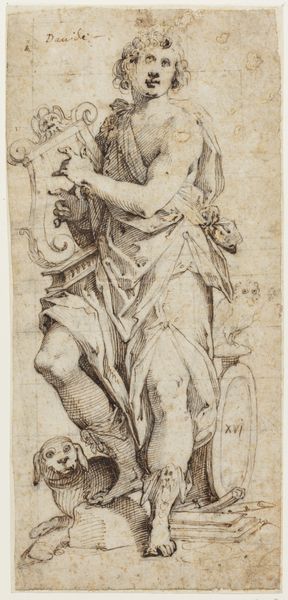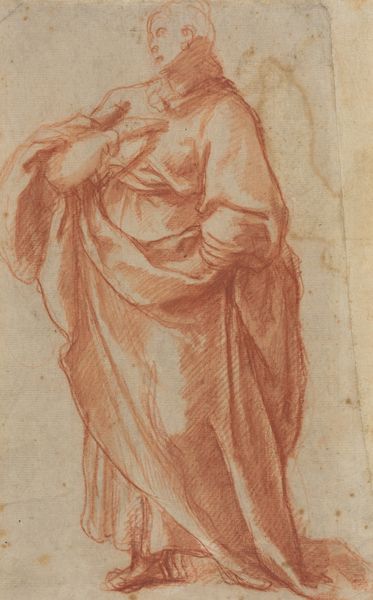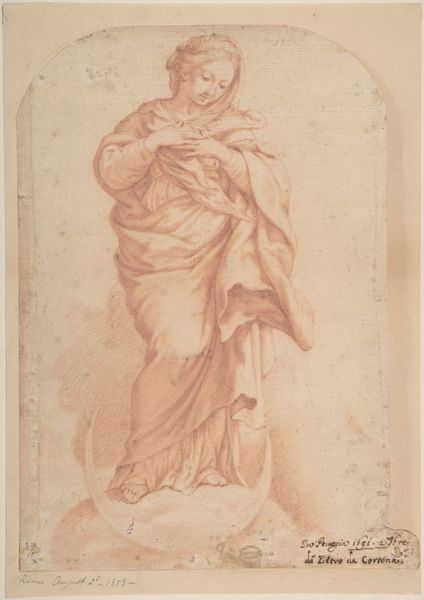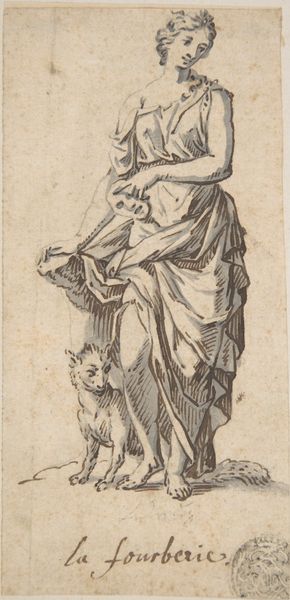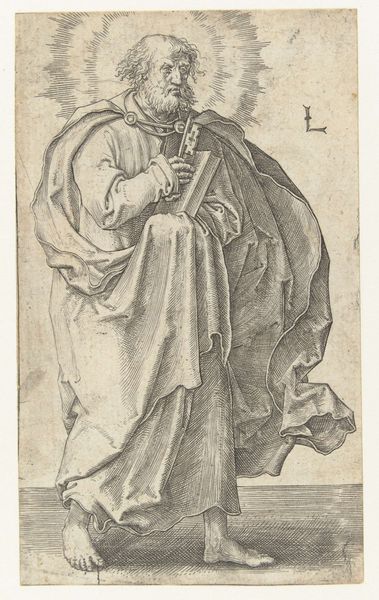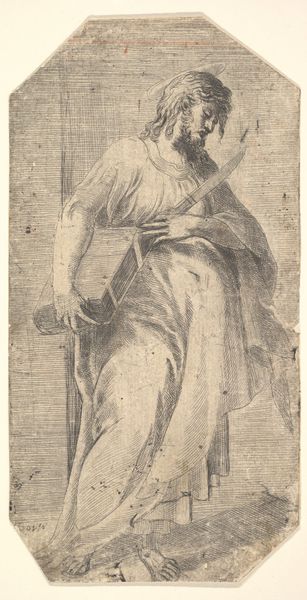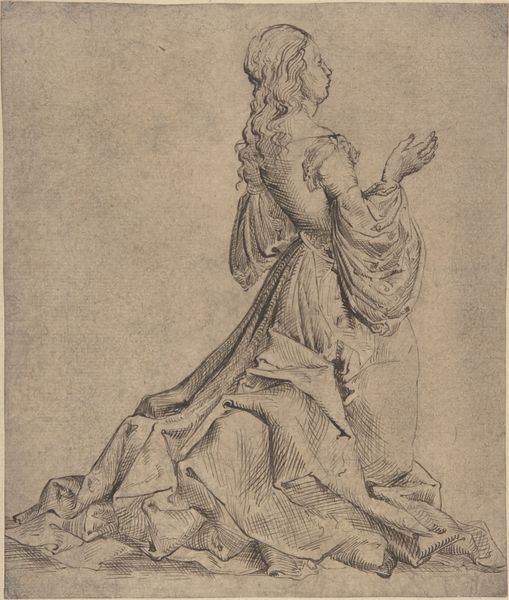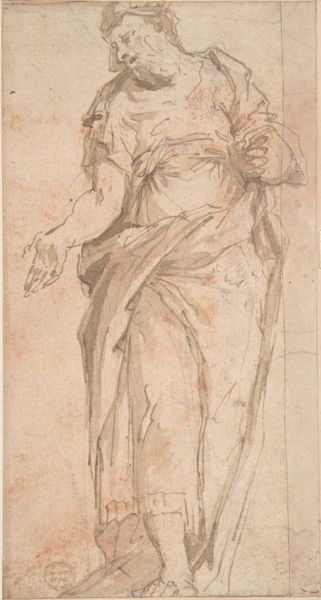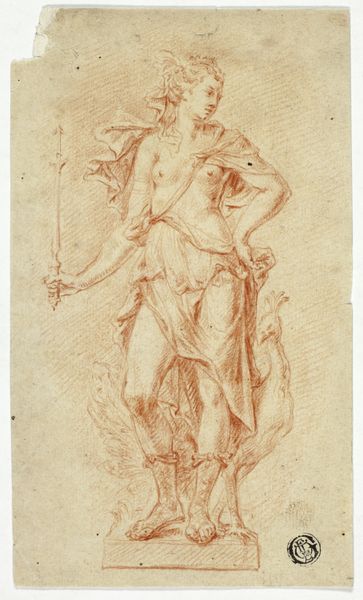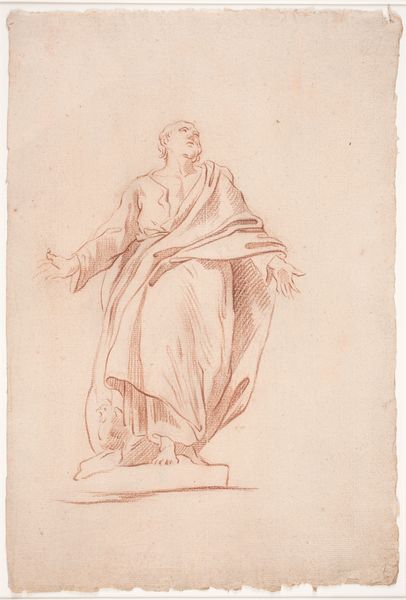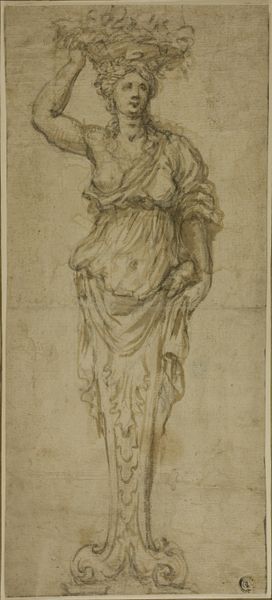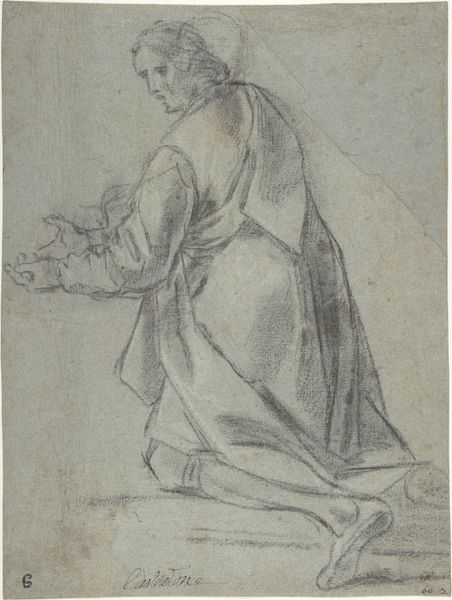
drawing, pencil, chalk
#
portrait
#
drawing
#
neoclacissism
#
pencil sketch
#
pencil drawing
#
pencil
#
chalk
#
15_18th-century
#
sketchbook drawing
#
portrait drawing
#
history-painting
Copyright: Public Domain
Editor: This is "Allegorische Gestalt der Freiheit" by Edme Bouchardon. It's a chalk and pencil drawing, probably from the 18th century. The figure seems very carefully posed, almost staged. What do you see in this piece? Curator: I'm struck by the artist's emphasis on material reality. Forget the allegorical subject for a moment. Focus on the raw materials: chalk and pencil on paper. These were, after all, the implements of intellectual and artistic labor in Bouchardon's time. Note how the inscription "LIBERALITAS" anchors the figure. It connects her to the specific economic and social order she represents, one defined, perhaps ironically, by both generosity and the ownership implied by the gift. Editor: So, you're saying that the materials themselves point to the social conditions of artistic production and consumption? Curator: Precisely. The drawing isn't just an image; it's evidence of a process, a record of artistic labor embedded within a particular system. Think about the accessibility of these materials, the social status implied by their skilled use. Does it challenge traditional definitions of "high art"? Editor: I see what you mean. I'd been focusing on the figure and its classical references, but looking at it as a product of labor gives it a completely new dimension. The medium becomes part of the message. Curator: Exactly. We need to move past simply admiring the aesthetic and look closely at how art reflects, and is shaped by, material conditions. Considering how such drawings were made, circulated and consumed adds layers of social and economic meanings to it. What will it make you think about the next time you look at a drawing like this? Editor: That's a good question. I will be mindful of what exactly was used to make a specific art work. Curator: I learned how a first impression can mislead our perception of artwork and how a deeper material approach allows us to perceive a richer set of social relations which shaped the piece.
Comments
No comments
Be the first to comment and join the conversation on the ultimate creative platform.
